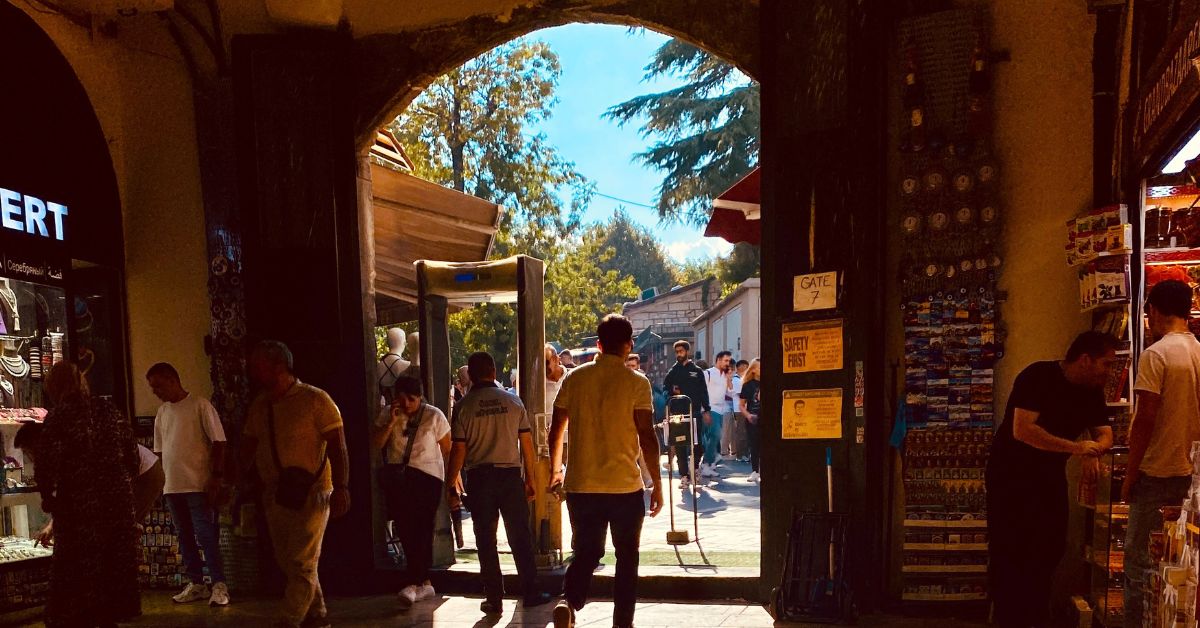Istanbul’s historic markets are living museums of commerce, where the scents of exotic spices mingle with the gleam of handcrafted copper and the vibrant colors of Turkish textiles. The Grand Bazaar and Spice Market (Egyptian Bazaar) have been commercial hubs since Ottoman times, offering visitors an unforgettable sensory experience alongside incredible shopping opportunities.
This comprehensive guide will help you navigate:
✔️ Must-visit Istanbul shopping destinations for authentic goods
✔️ What to buy at each market and how to spot quality
✔️ Clever bargaining strategies to get fair prices
✔️ Hidden corners most tourists miss
Prepare to step into a world where shopping becomes a cultural adventure!
1. The Grand Bazaar: Istanbul’s Shopping Wonderland
Navigating the World’s Oldest Covered Market
🕌 Key Facts:
- 61 covered streets
- 4,000+ shops
- Established in 1461
🏆 Best Sections to Explore:
- Jewelry Lane: Gold, silver, and precious stones
- Textile Quarter: Turkish towels and carpets
- Ceramics Area: Hand-painted İznik tiles
- Antiques Zone: Ottoman-era treasures
💰 Bargaining Tips:
- Start at 50% of asking price
- Be prepared to walk away
- Cash gets better deals
Pro Tip: Visit early (before 11am) to avoid crowds and get more vendor attention.
2. The Spice Market (Egyptian Bazaar): A Feast for the Senses
Istanbul’s Most Fragrant Shopping Experience
🌶️ Must-Buy Spices:
- Sumac (tangy citrus flavor)
- Pul biber (Aleppo pepper)
- Safran (saffron) – look for deep red threads
🍯 Sweet Treats to Try:
- Lokum (Turkish delight)
- Pekmez (grape molasses)
- Cevizli sucuk (walnut sausage)
🛍️ Shopping Advice:
- Compare prices at several stalls
- Ask to taste before buying
- Smaller shops near edges often have better prices
Local Secret: The back corridors have specialty shops selling rare spices and natural remedies.
3. What to Buy: Authentic Istanbul Souvenirs
Top Market Purchases & Where to Find Them
🧵 Textiles:
- Pestemal (Turkish towels) – Grand Bazaar
- Kilim cushions – Sahaflar Çarşısı
🍽️ Food Items:
- Apple tea – Spice Market
- Olive oil soap – Local markets
✨ Decorative Items:
- Evil eye ornaments – Everywhere!
- Copperware – Grand Bazaar basement
Quality Check: For carpets, look for the “handmade” certificate and tight knots (250+ per square inch).
4. Lesser-Known Markets Worth Visiting
Beyond the Tourist Hotspots
📚 Sahaflar Çarşısı (Book Bazaar):
- Antique books & prints
- Near Grand Bazaar entrance
👗 Arasta Bazaar:
- Quality textiles & ceramics
- Behind Blue Mosque
🥬 Kadıköy Produce Market:
- Fresh local foods
- Asian side hidden gem
Photography Tip: The colorful produce displays make excellent photo backdrops at local markets.
5. Market Etiquette & Shopping Tips
How to Shop Like a Local
⏰ Best Times to Visit:
- Grand Bazaar: Weekday mornings
- Spice Market: Late afternoon
💬 Useful Turkish Phrases:
- “Ne kadar?” (How much?)
- “Biraz indirim yapabilir misiniz?” (Can you give a discount?)
🚫 Avoid:
- Overly aggressive vendors
- “Special deals” for tourists
Payment Tip: Many vendors accept euros but prices are better in Turkish lira.
6. Market Tours & Experiences
Guided Shopping Adventures
🎭 Grand Bazaar Treasure Hunt:
- Solve clues to find hidden gems
- Includes tea with artisans
👃 Spice Market Sensory Tour:
- Learn spice blending
- Includes cooking demonstration
🧵 Textile Workshop:
- Meet master weavers
- Try traditional techniques
Tour Benefit: Guides know which vendors offer authentic, quality goods.
Conclusion: Your Istanbul Shopping Adventure Awaits
From the glittering alleys of the Grand Bazaar to the aromatic lanes of the Spice Market, Istanbul’s historic shopping destinations offer much more than souvenirs – they provide unforgettable cultural experiences. Whether you’re hunting for the perfect carpet or just soaking up the vibrant atmosphere, these markets will leave you with lasting memories (and probably a full suitcase!).
Ready to shop? Book our guided market tour for insider access or check our shopping season guide for best times to visit. Share your finds with #IstanbulSouvenirs!
Useful Links
- Internal Links:
- External Links:
With this guide to Istanbul shopping in its historic markets, you’re ready to bargain like a pro and bring home authentic treasures. Happy hunting!
